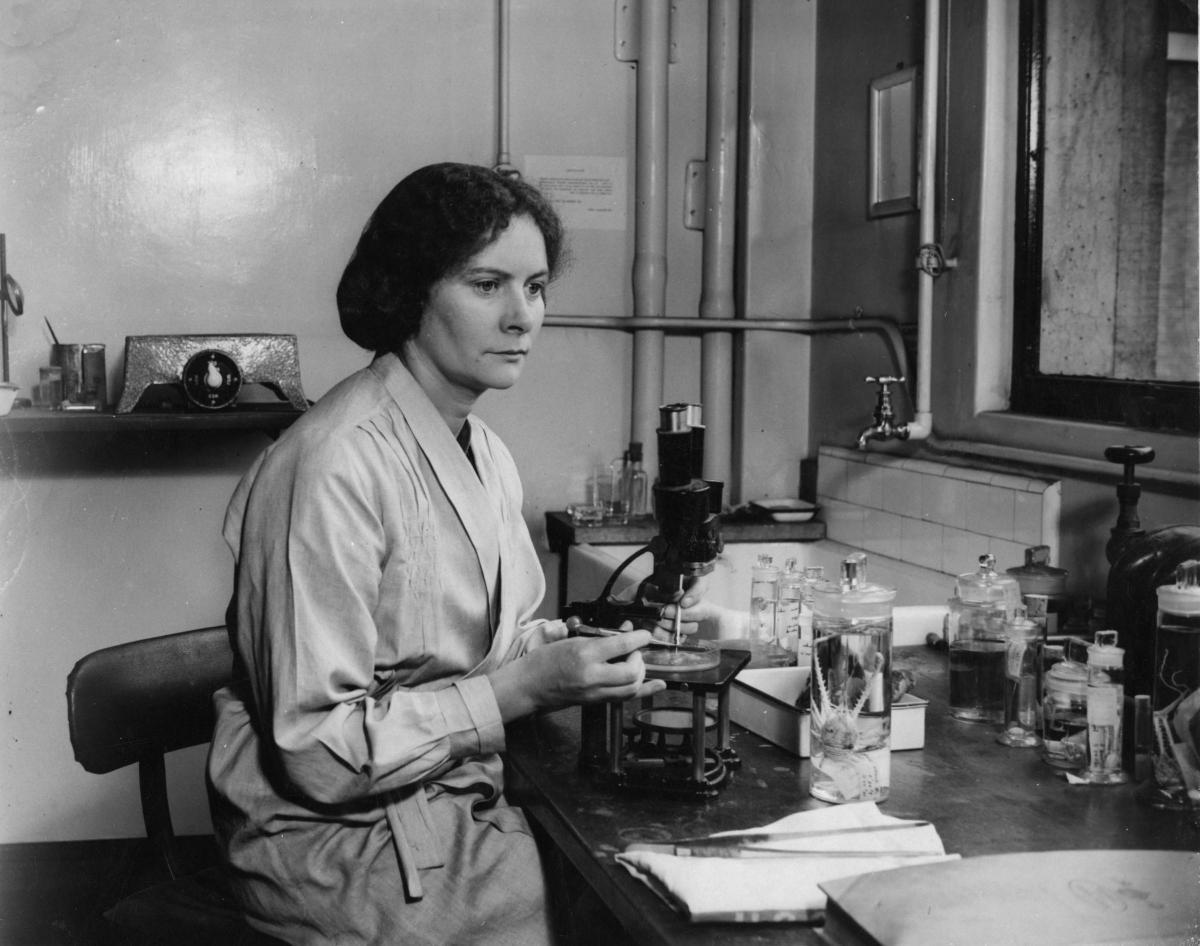
What happens when you consume too much calcium and alkali? Milk-Alkali Syndrome (MAS) occurs. This condition arises from excessive intake of calcium and absorbable alkali, leading to high calcium levels in the blood, metabolic alkalosis, and kidney problems. Initially identified in the 1920s, MAS has made a comeback due to the popularity of over-the-counter calcium carbonate supplements. Symptoms can range from mild, like fatigue and nausea, to severe, such as kidney failure. Understanding MAS is crucial for anyone taking calcium supplements, especially postmenopausal women. Let's dive into 35 key facts about this condition to help you stay informed and healthy.
Key Takeaways:
- Milk-alkali syndrome is caused by consuming too much calcium and absorbable alkali, leading to kidney issues. Symptoms include back pain, confusion, and irregular heartbeat. Treatment involves hydration and stopping calcium supplements.
- Prevent milk-alkali syndrome by following recommended calcium intake. Be aware of excessive calcium in antacids and supplements. Public health campaigns are needed to educate about the risks of excessive calcium intake.
What is Milk-Alkali Syndrome?
Milk-alkali syndrome is a condition that arises from consuming too much calcium and absorbable alkali. This leads to a trio of issues: hypercalcemia, metabolic alkalosis, and renal insufficiency. Let's dive into the key facts about this condition.
-
Definition: Milk-alkali syndrome involves excessive calcium and absorbable alkali intake, resulting in hypercalcemia, metabolic alkalosis, and renal insufficiency.
-
Causes: The main culprit is the ingestion of large amounts of calcium carbonate, often found in antacids or calcium supplements.
-
Historical Context: First recognized in the 1920s, the syndrome was linked to the Sippy regimen, which used milk and bicarbonate to treat peptic ulcers.
-
Pathophysiology: Excess calcium and alkali intake leads to hypercalcemia, shifting the body's acid-base balance towards alkalosis, potentially causing renal insufficiency.
Symptoms and Diagnosis
Understanding the symptoms and how to diagnose milk-alkali syndrome is crucial for early intervention and treatment.
-
Symptoms: Early stages might be asymptomatic, but symptoms can include back pain, confusion, constipation, depression, excessive urination, fatigue, irregular heartbeat, nausea, and vomiting.
-
Kidney Function: The condition can impair kidney function, leading to acute renal failure, sometimes necessitating emergency hemodialysis.
-
Calcium Deposits: Calcium can deposit in the kidneys and other tissues, a condition known as nephrocalcinosis, detectable via X-rays, CT scans, and ultrasounds.
-
Diagnostic Tests: Diagnosis involves tests like electrolyte levels, ECGs for heart activity, EEGs for brain activity, GFR for kidney function, and blood calcium and vitamin D levels.
Treatment and Prognosis
Treatment strategies and the prognosis for milk-alkali syndrome vary depending on the severity of the condition.
-
Treatment: Hydration with intravenous fluids, reducing or stopping calcium and vitamin D supplements, and in severe cases, dialysis may be necessary.
-
Prognosis: Often reversible if kidney function remains normal, but severe, prolonged cases can lead to permanent kidney failure requiring dialysis.
-
Complications: Common complications include calcium deposits in tissues (calcinosis) and kidney failure. Severe cases can also lead to metastatic calcification.
Prevention and Risk Factors
Preventing milk-alkali syndrome involves understanding the risk factors and adhering to recommended dietary guidelines.
-
Prevention: Follow the recommended daily intake of calcium. Taking more than 1.2 grams (1200 milligrams) of calcium per day without medical supervision increases the risk.
-
Alternative Names: Also known as calcium-alkali syndrome, Cope syndrome, Burnett syndrome, hypercalcemia, and calcium metabolism disorder.
-
Epidemiology: Now the third most common cause of hypercalcemia in hospitalized patients, following hyperparathyroidism and malignant neoplasms.
-
Risk Factors: High doses of calcium carbonate, especially in antacids or supplements, and vitamin D supplements can worsen the condition.
Patient Population and Modern Context
The syndrome affects various populations differently and has seen a resurgence in recent years.
-
Patient Population: More common in postmenopausal women using over-the-counter calcium and vitamin D supplements.
-
Acute vs. Chronic: Acute onset can cause rapid hypercalcemia and acute renal failure within a week of excess calcium intake. Chronic cases may lead to irreversible renal failure.
-
Therapeutic Index: The therapeutic index of calcium carbonate is small, meaning usual doses can produce severe hypercalcemia and milk-alkali syndrome.
-
Case Reports: Instances of the syndrome induced by nicotine replacement gum and carbonated water highlight the potential for various sources of excessive calcium intake.
Special Considerations
Certain situations and populations require special attention regarding milk-alkali syndrome.
-
Pregnancy: Pregnant women absorb calcium more avidly and may be prescribed supplements, increasing the risk of developing the syndrome.
-
Newborns: If a pregnant woman develops the syndrome, the newborn may experience hypocalcemia in the neonatal period.
-
Race-, Sex-, and Age-Related Factors: While it can affect anyone, it's more common in postmenopausal women due to increased supplement use for osteoporosis prevention.
-
Modern Era: With nonabsorbable antacids and histamine-2 blockers, the syndrome became rare but has increased with the widespread use of over-the-counter calcium carbonate supplements.
Clinical Management and Awareness
Effective management and awareness are key to preventing and treating milk-alkali syndrome.
-
Interprofessional Care: Management requires an interprofessional approach, involving hydration, withdrawal of supplements, and close monitoring of kidney function.
-
Histological Findings: Calcium deposits in the kidneys (nephrocalcinosis) and other tissues can be seen on imaging studies.
-
Clinical Course: The clinical course can vary from acute to chronic, with acute cases presenting rapid onset and chronic cases progressing slowly over time.
-
Incidence: Despite its rarity, milk-alkali syndrome is now the third most common cause of hypercalcemia in hospitalized patients.
-
Pathogenesis: The exact pathogenesis remains uncertain, but it's believed to involve an interplay between hypercalcemia and alkalosis in the kidneys, leading to a self-reinforcing cycle of renal dysfunction.
Public Health and Nutritional Considerations
Public health awareness and proper nutrition play a significant role in managing and preventing milk-alkali syndrome.
-
Self-Medication: Self-medicating with additional antacids or calcium supplements significantly increases the risk of developing the syndrome.
-
Awareness: Both physicians and the public need to be aware of the potential adverse effects of ingesting excessive calcium carbonate.
-
Treatment Challenges: Managing severe hypercalcemia and renal failure may require aggressive hydration and dialysis. Long-term management is needed to prevent recurrence.
-
Nutritional Considerations: Patients should avoid excessive intake of calcium and alkali. Their diet should be monitored closely to prevent recurrence.
-
Interprofessional Objectives: Managing the syndrome involves describing the pathophysiology, outlining the typical presentation, identifying management options, and improving care coordination among healthcare providers.
-
Review of Literature: Literature reviews highlight the syndrome's incidence, pathogenesis, histologic findings, diagnosis, and clinical course, essential for effective management and prevention.
-
Public Health Implications: Public awareness campaigns are needed to educate individuals about the risks associated with excessive calcium intake and the importance of adhering to dietary guidelines.
Key Takeaways on Milk-Alkali Syndrome
Milk-alkali syndrome is a serious condition caused by too much calcium and absorbable alkali. It leads to hypercalcemia, metabolic alkalosis, and renal insufficiency. Symptoms can range from mild to severe, including confusion, fatigue, and irregular heartbeat. The main culprits are over-the-counter calcium carbonate supplements and antacids. Diagnosis involves checking electrolyte levels, kidney function, and calcium levels. Treatment focuses on hydration and stopping calcium and vitamin D supplements. Prevention is key: stick to the recommended daily intake of calcium. This syndrome is now the third most common cause of hypercalcemia in hospitals. Awareness among both the public and healthcare providers is crucial. By understanding the risks and managing calcium intake, we can prevent this potentially life-threatening condition. Stay informed and take care of your health!
Frequently Asked Questions
Was this page helpful?
Our commitment to delivering trustworthy and engaging content is at the heart of what we do. Each fact on our site is contributed by real users like you, bringing a wealth of diverse insights and information. To ensure the highest standards of accuracy and reliability, our dedicated editors meticulously review each submission. This process guarantees that the facts we share are not only fascinating but also credible. Trust in our commitment to quality and authenticity as you explore and learn with us.


